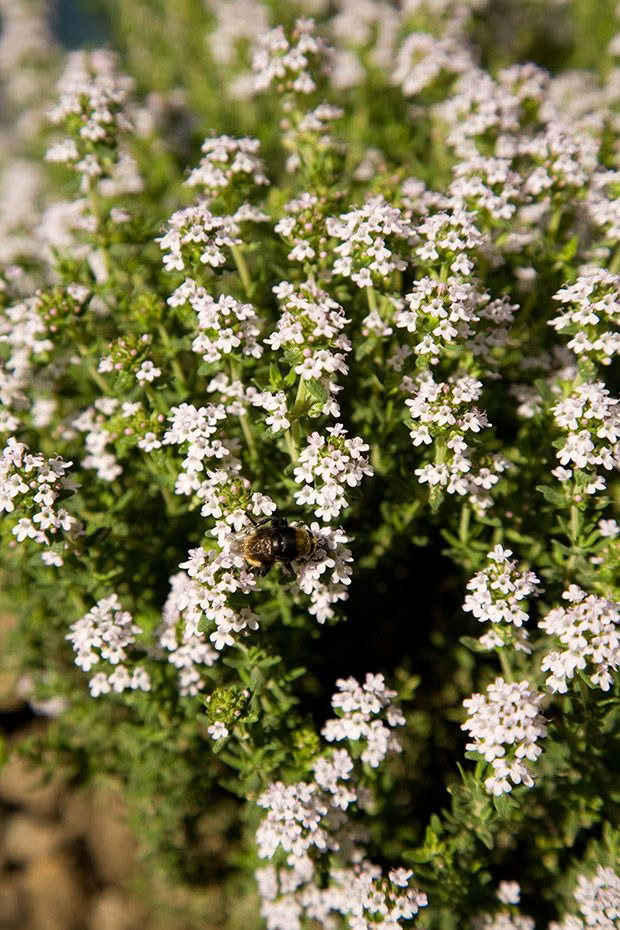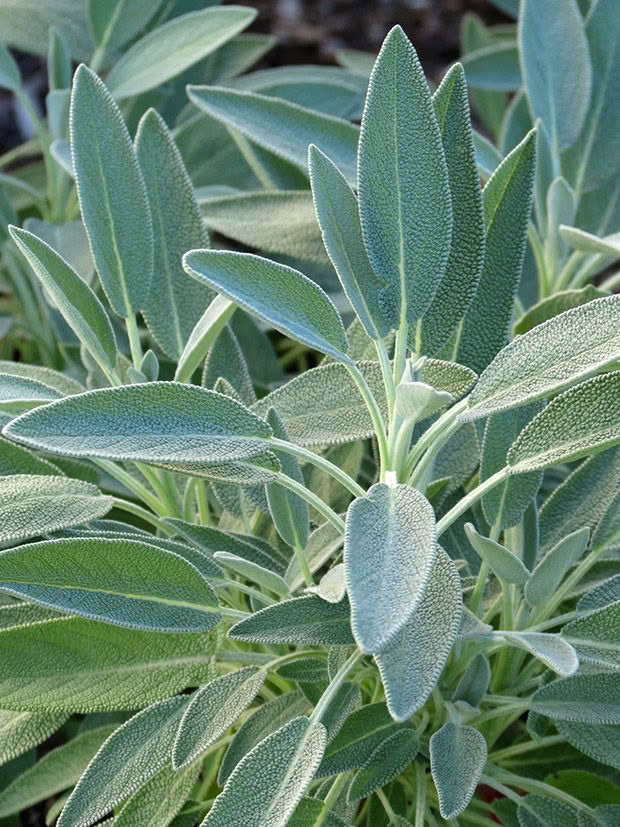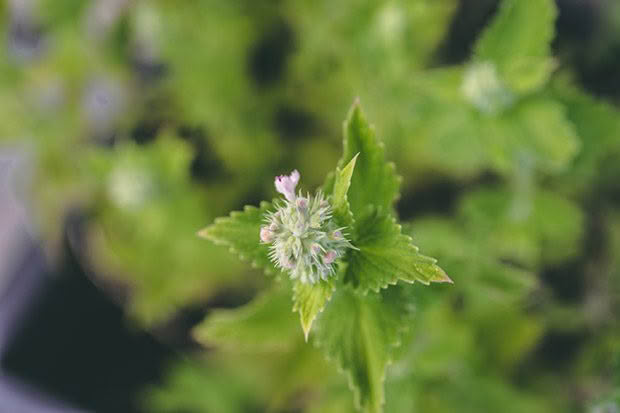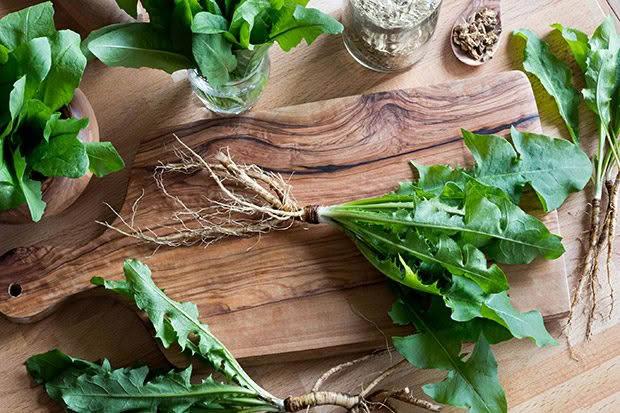6 healing tonics to make with herbs from the garden

With cold and flu season around the corner, it’s time to turn to Mother Nature for the tools of self-defence. These herbs can be grown then made into potions that soothe and strengthen.
Words: Extract from Nadia: A Seasonal Journal
1. Thyme (Thymus vulgaris)
Type: ornamental, culinary, medicinal
Tonic: There are many species and cultivars of thyme, but common thyme is grown for its medicinal uses. It is excellent for coughs and colds, helping to soothe sore throats and relieve congestion and bronchial spasms. You can make a tea by steeping 1 teaspoon dried leaves (or 2-3 teaspoons fresh leaves) in 1 cup of freshly boiled water, covered. Sweeten with honey if desired. Sip through the day or gargle with it for sore throats.
Care: Thyme is a hardy evergreen herb, though young seedlings need protection in winter. Sow the seeds in punnets or small pots, press into the soil and leave uncovered. Place in a warm, sheltered spot to germinate. When big enough, transplant to the garden. Plant in full sun in free-draining soil. Thyme doesn’t like wet feet, so add pumice or grit to improve drainage if necessary. Avoid rich fertilisers; thyme does best in average, not rich, soil.
2. Sage (Salvia officinalis)

Type: ornamental, culinary, medicinal
Tonic: Sage is useful for soothing the symptoms of colds. It has antiseptic and antibiotic properties and is antihydrotic (reduces sweating), anticatarrhal (removes and helps prevent mucus congestion) and anti-inflammatory. Make a tea as for thyme. Alternatively, make sage vinegar. Fill a jar with dried sage leaves then top with apple cider vinegar. Cover tightly with a non-metal lid and leave to infuse for 4 weeks, shaking once a day. Strain into a clean jar, then take 2 tablespoons daily as a tonic.
Care: Sage is a hardy evergreen perennial that grows to about 50cm tall. Similar to thyme, it must have excellent drainage. Prune tops in spring to encourage plants to bush out. A light pruning after flowering in summer will keep plants compact.
Note: While sage is fine to use in cooking, avoid it in its concentrated form if pregnant or breastfeeding as large amounts have been linked to high blood pressure and miscarriage.
3. Peppermint (Mentha x piperita)

Type: culinary, medicinal
Tonic: Peppermint tea is an excellent tummy-soother, especially if you have wind, cramps or indigestion. Steep leaves in freshly boiled water for 8-10 minutes. If you’re not a fan of peppermint tea, try a salve to rub on your stomach when needed. Place 1 tablespoon dried, crushed lavender flowers and 1 tablespoon dried, crushed peppermint leaves into a saucepan with ¼ cup olive oil. Heat very gently — just until you feel the oil is getting warm — then turn off the heat. Cover and leave on the stove for 2 hours, or longer. Strain into a bowl through a fine muslin cloth, squeezing out as much liquid as possible. Discard herbs.
Place the oil and 2 teaspoons beeswax in a double boiler and heat on low until the beeswax is melted. Pour into clean, dry jars or tins. Allow to cool before screwing on the caps. Store in a dark cupboard.
Care: Peppermint likes moist, nutrient-rich soil. Regularly apply a seaweed-comfrey liquid fertiliser.
Note: Avoid using peppermint oil on babies or small children.
4. Catnip (Nepeta cataria)

Type: ornamental, culinary, medicinal
Tonic: While it may have an excitable effect on cats, catnip is calming for us two-legged folk. It’s used to treat tension and anxiety and improve sleep. Catnip’s antispasmodic properties are also useful for alleviating wind and cramps. To make a soothing tea, steep 2 teaspoons of dried catnip leaves in a cup of freshly boiled water for 8-10 minutes. Add lemon juice to the mix for a citrusy flavour, or honey to sweeten.
Care: Catnip is easy to grow from seed or seedlings. It’s a perennial member of the mint family, dying down over winter but reappearing in spring. It’s typically started by seed in spring, or full-grown plants can be planted at any time in summer. Catnip likes full sun and free-draining soil. To dry the leaves, hang the stems in small bunches (too many in one bunch can cause mould to grow in the centre) in a warm (not hot), airy room out of direct sunlight.
Note: Avoid catnip if pregnant or breastfeeding.
5. Ginger (Zingiber officinale)
Type: culinary, medicinal
Tonic: If you’re feeling queasy, reach for ginger. This spicy root is an effective treatment for nausea, including travel and morning sickness. Use it fresh (infuse 1-2 teaspoons of grated ginger root in freshly boiled water for 8-10 minutes) or dried (try ½ teaspoon powdered ginger). You can add powdered ginger to lemonade for children at half the above dose. Ginger also makes an excellent daily tonic: it’s anti-inflammatory and is a natural painkiller. Infuse with lemon slices and drink each morning.
Care: Root ginger is best planted in spring or early summer and harvested in autumn. You can start by planting a store-bought rhizome with ‘eyes’ or growth buds, either in the ground (in the Far North) or in containers. Ginger is a tropical plant and grows best in filtered sun in fertile, moist, free-draining soil. If growing outdoors, bring inside over winter. Mist plants to keep humidity high.
6. Dandelion (Taraxacum officinale)

Type: weed, medicinal
Tonic: The roots and leaves of dandelions have been used in herbal medicine for centuries, most notably as a diuretic, for liver detoxification and to reduce inflammation. The roots are especially beneficial as a liver tonic which can help stimulate digestion before or after a heavy meal.
Dandelion root is also mildly laxative. Both the leaves and the roots are highly nutritious, packed with vitamins, minerals and antioxidants. The root also contains inulin, a soluble fibre that supports good bacteria in the gut. To make a liver tonic, infuse ½ to 2 teaspoons of dried root in a cup of freshly boiled water.
Care: Digging up dandelion roots can be hard work as the long taproots grow deep. Dig the roots in autumn to dry and use for the year.
 This article first appeared in Nadia: A Seasonal Journal Magazine.
This article first appeared in Nadia: A Seasonal Journal Magazine.

